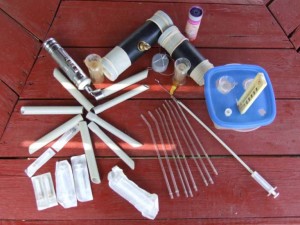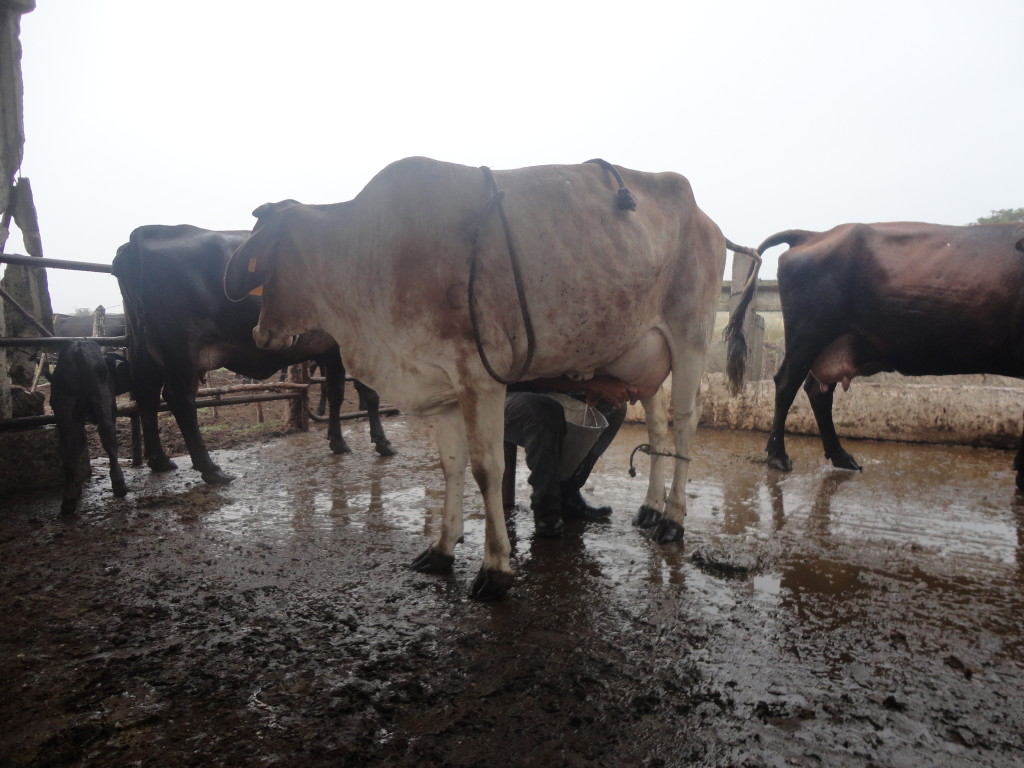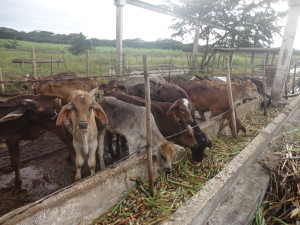
Artificial insemination: No rod, no way
CAMAGÜEY — Cheese is expensive, milk is inaccessible, beef is banned. The ills of cattle raising are caused to a great degree by the underutilization of a peculiar tool, the insemination rod. If the rod technique were used more often and more effectively, the cattle would be more productive — though it would still be insufficient for 11 million Cubans.
The sale of milk for the consumption of children under 7 is regulated by the State through the ration card. Beef is sold through medical prescription, as in the case of diabetics. The rest of the people find it concealed in soy burgers or mortadela sausages.
To eat steak, there are three options: a restaurant, the hard-currency stores and their exorbitant prices, or the risky illegal purchase.
The shortage exists nationwide. But it’s worthwhile to analyze the phenomenon in Camagüey, which leads the nation in the production of beef and milk.
From the fields to the table
Almost all the farmers in this province who applied for a plot of land in usufruct asked for land for fodder. Today, many lament their choice because selling the bulls is a problem.
“They sold us the worst cattle, they don’t prioritize our requests for herbicides and we’re harassed by everyone, from the Land and Farm Registry to the [Communist] Party!,” says a farmer in Guáimaro who declined to give his name as soon as he heard that he was being interviewed for a foreign publication.
“I took up cattle raising because I thought it would be profitable, but hell, I want to give it all up as soon as I sell these 20 remaining bulls,” he complained. “I will then sell beans, which the State buys right away and for a better price.”
The decision of the Institute of Veterinary Medicine to forbid abattoirs [slaughterhouses] to accept underfed cattle discourages farmers from caring for thousands of heads, which eventually die of thirst as a result of the drought.
The farmers are responsible for transporting the cattle to the railroad yards from which the animals are carried to Santiago de Cuba and Guantánamo. If something happens to the animals on the road to the yards (they are walked for miles and days), the farmers must absorb the monetary losses.
The animals, which in most cases do not have the genetic characteristics of a strong breed or a hybrid, lose a lot of body weight before even reaching a railcar.
“We do even worse than the fodder farmers,” says a cattle rancher in Vertientes who also asked for anonymity. “The livestock vendors sold us the worse cows and we’re still depending on the State to buy the canteens, the boots, the ropes, the wire for fences, the fodder.

“To make things worse, the only legal purchaser of milk is the state-run company that certifies the quality of the milk. So everything is against us.”
Genetic quality is a big issue
Artificial insemination does not solve the insufficient production of beef and milk, but without it it becomes impossible to improve the fate of cattle raising.
“Farmers own 80 percent of the cows and inseminate only 13 percent. If we don’t revert this trend in a decade, genetic quality will be lower than what it was in 1959,” said Evaristo Tejera del Risco, a specialist in technical and reproductive services at the Basic Entrepreneurial Unit (UEB) in Camagüey of the National Artificial Insemination Service.
“In the past, there was more access to beef and milk, but the animals were genetically below those we achieved in the 1970s and ’80s with our programs of cattle development,” he said.
“In Camagüey we had the famous Triangles, devoted to dairy production, with mechanized milking and insemination brigades at every productive base. We also had the Rectangle, which at one time was the largest state-run company specializing in cattle fattening in Latin America.”
But none of the entities that once filled the local farmers with pride are what they once were. To improve cattle proliferation two years ago, the state announced the creation of 15 reproduction brigades. Most of them never saw the light of day; those that exist are bedeviled by organizational problems and a lack of transportation and specialized utensils.
“Many farmers want to do that work, but there aren’t enough inseminators and farmers are not told about the benefits of insemination. I’ve run into people who don’t ask for the service because they think it’s too expensive. When I tell them that inseminators charge 64 pesos for each calf born, they’re amazed. They didn’t know,” says Aroldo Hernández Gutiérrez, a veterinarian in the city of Esmeralda.
According to Aroldo, many farmers “love” their single bull, which mates even with its offspring. That consanguinity destroys genetic quality.
Farmers also lack bulls qualified for an efficient mating. For more than 160,000 cows, there are barely 70 stud bulls, because there are more than 30,000 producers whose studs are not considered genetically qualified.
Guaranteed reproduction
What’s ironic about the problem is that the UEB of the National A.I. Service produces almost 1 million bags of semen a year, each with 35 million spermatozoids. That’s enough to ensure the future of Cuba’s cattle industry.
The Jesús Suárez Gayol Cooperative of Cattle Production, in the city of Camagüey, exemplifies how artificial insemination changes everything. In the 1990s, it produced 1 million liters of milk every year, but at the turn of this century production declined. Three years ago, reproduction was prioritized.
Cruz Alejandro González Rodríguez, an artificial insemination technician has worked for the cooperative for 15 years. Mating the heifers at the right time makes them better cows, he says.
“We work as a team. The owner and the stockmen notify me whenever they see a heifer in heat. That way, I am more accurate and the animals’ reproductive cycle is not disturbed.”
The Gayol Dairy, nearing 1 million liters, is the only one in the city with a complete set of instruments and technical equipment. The absence of proper tools is province-wide. Inseminators and utensils are in short supply.

Farmers remain at the mercy of the State, which lacks the logistics to guarantee service to out-of-the-way farmers, such as Misael Vega Garcés of the farm La Felicia, at the Pepito Tey Cooperative in Santa Cruz del Sur.
With 80 cows and 2.5 miles away from the nearest highway, Vega milks only 10 percent of his cows because his bull “turned out to be no good and we’ve never seen an inseminator come out here. I asked for one at the cooperative, but they say that there’s no money for transportation. I don’t have money to buy another bull or to pay the man who comes to inseminate the cows.”
Evaristo Tejera insists that insemination rods are a solution to the cattle problem.
“The proportion of stud to cow in a direct mating is 1 for 20. We’d need almost 9,000 bulls for our reproductive cows. With insemination, just 20 males are sufficient. And there’s the benefit of choosing the semen, whereby the rancher selects the type of cattle he’ll get and knows in advance the size and productive output of the cattle.”
Butter, leather, rodeos, the plowing of land. The economy of many people depends on cattle raising and in Camagüey cattle raising is a culture. To rescue insemination is to redeem cattle raising and improve the lives of people here, who pay dearly for cheese, milk and yoghurt and seldom see the forbidden beef.
[Photo at top is taken from the blog Revolución.]

